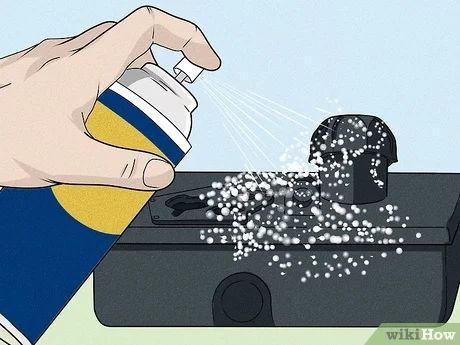Keeping your lawn mower’s carburetor clean is essential for proper engine performance and reducing emissions. Over time, the carburetor can become clogged with dirt, dust, grass clippings, old gas and more. This restricts airflow and prevents the engine from getting the right air/fuel mixture. The result is a rough-running engine that may stall or surge. Fortunately, there are steps you can take to clean the carburetor without completely removing it from the mower.
Page Contents
Why Clean the Carburetor?
Here are some key reasons why cleaning the carburetor is important for lawn mower maintenance:
- Removes dirt, debris and residue – Over time, small particles can build up and clog carburetor passages.
- Fixes engine surging or stalling – A dirty carb restricts airflow, causing inconsistent engine performance.
- Improves starting – Eliminating obstructions allows for easier cold starting.
- Increases engine power – With clearer passages, the engine gets more air and runs stronger.
- Reduces emissions – A clean carb provides more complete combustion and fewer emissions.
- Extends engine life – Preventing carbon buildup helps the engine last longer.
The carburetor is the heart of the engine. Keeping it clean improves mower performance and engine lifespan.
Can You Clean a Carburetor Without Removing It?
In many cases, the lawn mower carburetor can be serviced without completely detaching it from the engine. This avoids the hassle of uninstalling the carb, gaskets and linkages. Here are some cleaning steps you can take with the carburetor still installed:
- Use carburetor cleaner spray – Spraying cleaner through all the exterior openings dissolves deposits.
- Blow out passages – Use compressed air to force out loosened debris.
- Clean exterior surfaces – Wipe down outside of carburetor with a cloth.
- Check adjustment screws – Turn screws to clear obstructions under them.
- Inspect jets – Remove main jet and blow through it to ensure it’s clear.
- Check fuel filter – Replace external inline filter if it’s clogged.
This on-engine cleaning service should resolve many minor carburetor issues. For more thorough cleaning, the carburetor will need to be detached from the mower. But in many cases, an external clean is sufficient.
Step-by-Step Guide
Follow these steps to clean your lawn mower carburetor without full removal:
1. Turn fuel valve off
Locate the fuel shut-off valve below the carburetor. Turn it clockwise to the “OFF” position. This prevents gas from flowing during the service.
2. Disconnect spark plug
Use a spark plug wrench to detach the spark plug. This will allow you to turn the engine over without ignition occurring.
3. Clean exterior surfaces
Spray all outer carburetor surfaces with carburetor cleaner. Let it soak for 2-3 minutes. Then wipe down with a clean cloth. Be careful not to damage any attached linkage rods.
4. Blow out openings
Insert the thin tube from a can of compressed air into every vent, jet and hole. Blast air through to dislodge debris. Wear eye protection.
5. Flush with cleaner
Spray more carb cleaner through the openings to help dissolve deposits. Let soak before blasting with air again.
6. Remove and clean fuel bowl
The fuel bowl can be removed without detaching the entire carburetor. Take it off and clean all holes and orifices. Reinstall when done.
7. Check adjustment screws
Turn the idle speed and fuel mixture adjustment screws to clear any blocked passages underneath them. Don’t adjust beyond factory settings.
8. Inspect fuel filter
Detach the external fuel filter and inspect it. Replace if clogged. Reattach firmly.
9. Remove and clean main jet
The main fuel jet is removable without detaching the carburetor. Blow through it to ensure it’s completely clear of obstructions.
10. Reattach components
Reinstall the spark plug, fuel line and any other parts you detached. Make sure the fuel valve is open before starting.
When to Remove the Carburetor
In some cases, an on-engine clean may not be enough. Signs that a full carburetor removal is needed include:
- Persistent engine stalling
- Rough idle
- Hesitation or lack of power
- Sooty exhaust
- Extreme varnishing in jets
Detaching the carburetor provides access for soaking and ultrasonic cleaning. But it requires working on the gaskets and fuel lines. Only remove it fully if an external clean doesn’t improve performance.
Cleaning Tips
Follow these tips for effective carburetor cleaning:
- Use penetrating carb cleaner, not just compressed air. Let it soak first.
- Check jets, ports and openings carefully with a flashlight.
- Rinse components after soaking to prevent residue.
- Blow out passages from multiple angles.
- Clean the exterior too – don’t just focus inside.
- Check fuel filters – replace if needed.
- Adjust screws only within factory limits.
- Check the float needle and seat for wear or damage.
- Consider ultrasonic cleaning for very dirty carburetors.
Taking your time leads to better results. Don’t rush the process so you can access everything.
Conclusion
Cleaning the lawn mower carburetor without full removal is possible in many cases. Focus on spraying cleaner into all openings, blowing out passages and wiping down exterior surfaces. Remove components like the fuel bowl and main jet for thorough cleaning. Adjust screws gently to avoid damage. Check the fuel filter and replace as needed. Take all safety precautions against fuel, fumes and compressed air when servicing the carburetor. With some effort, you can often avoid the hassle of complete carburetor removal.
